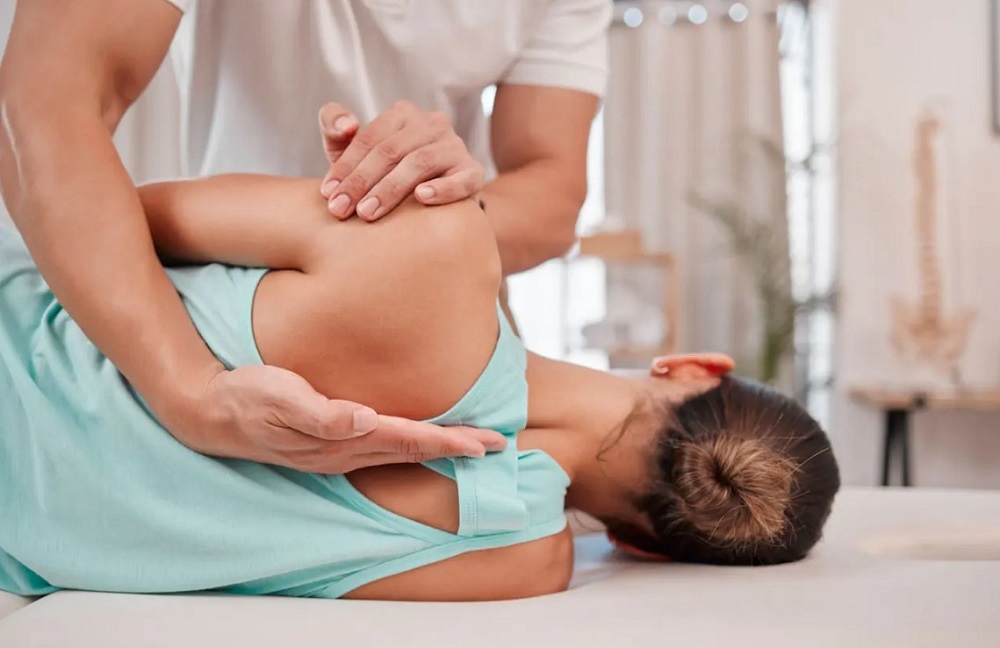Muscle strains can strike unexpectedly. You feel a sudden twinge or discomfort in your biceps, shoulder, or thigh muscles. It can disrupt your daily life and make even the simplest tasks daunting.
Whether you are an athlete, a weekend warrior, or simply trying to go about daily life, anyone can strain their muscles.
Let’s explore muscle strains in detail, from what they feel like to what causes them and how you find relief.
Table of Contents
What Are Muscle Strains?
Muscle strains, muscle pulls, or tears occur when muscle fibers are stretched or torn beyond their capacity.
You can classify them into three grades, depending on their severity:
- Grade 1 (Mild): In this case, only a few muscle fibers are stretched or torn. Symptoms are usually mild, and recovery is relatively quick.
- Grade 2 (Moderate): Grade 2 strains involve a more significant number of damaged muscle fibers. Symptoms are more pronounced, and recovery may take several weeks.
- Grade 3 (Severe): Grade 3 strains are the most serious, often involving a complete muscle or a tendon. Recovery from a grade 3 strain can be extensive, requiring surgical intervention.
What Do Muscle Strains Feel Like?
You are spending a usual day – moving a heavy box around the house, jogging on the track, or even reaching for something on your kitchen shelf and BAM! Suddenly, you feel a sharp pain in your muscles.
It’s as if something has snapped or pulled, and you may experience:
- Pain: A muscle strain is often accompanied by pain, ranging from mild discomfort to intense agony. This pain is usually present in the affected muscle or its surrounding area.
- Swelling: You may notice some swelling around the injured muscle. Swelling is your body’s natural response to injury and inflammation.
- Weakness: The affected muscle may feel weak and less capable of performing its usual functions. You might struggle to lift objects or perform effortless movements.
- Tenderness: When you touch or press the injured area, it may feel tender or sore.
- Bruising: In severe cases, bruising can occur due to the rupture of small blood vessels within the muscle tissue.
What are the Causes of Muscle Strains?
What leads to these painful muscle tears and strains? Let’s explore the causes:
Overexertion
Pushing your muscles beyond their limits during intense exercise or everyday activities can lead to muscle strains.
Examples include lifting heavy objects without proper form or overextending during a workout.
Sudden Movements
Abrupt, uncontrolled movements can strain your muscles. For instance, making a quick turn while running or pivoting awkwardly can cause strains.
Muscle Fatigue
When your muscles lack proper rest, they are more susceptible to strains. Overtraining without allowing sufficient recovery time is a common cause.
Dehydration
Inadequate hydration can lead to muscle cramps and strains. Muscles require proper fluid balance to function optimally.
Poor Warm-Up
Skipping warm-up exercises before physical activity can leave your muscles unprepared for the strain they’ll face.
Warming up increases blood flow and flexibility, reducing the risk of strains.
Suggested Read: The Power of Hot Massage Therapy
Muscle Imbalances
Imbalances in muscle strength and flexibility can strain specific muscle groups, making them more prone to strains.
Aging
With aging, our muscles become less flexible and more susceptible to injury. It’s essential to adapt your activities and routines accordingly.
How to Get Relief from Muscle Strains?
If you’ve experienced a muscle strain, you should know how to find relief and facilitate healing. Here are some steps to help you on your road to recovery:
Rest
The first and foremost step is to give your injured muscle time to heal.
Avoid activities that exacerbate the pain and seek rest to allow the damaged muscle fibers to repair themselves.
Ice
Applying ice to the injured area within the first 24-48 hours can help reduce swelling and alleviate pain.
Be sure to use a cloth or towel to protect your skin from direct contact with the ice.
Compression
Wrapping the affected area with an elastic bandage can help reduce swelling and support the injured muscle.
Ensure you don’t wrap it too tightly to avoid compromising blood circulation.
Elevation
Elevating the injured limb or muscle above heart level can reduce swelling and promote better circulation. It can be helpful for lower limb strains.
Physical Therapy
Depending on the severity of the strain, physical therapy may be necessary to regain strength and flexibility in the affected muscle.
A trained therapist can guide you through exercises and stretches tailored to your injury.
Suggested Read: Difference Between Physical Therapy and Rehabilitation
Heat
After 48 hours, applying heat (such as a warm compress) can help relax the muscles and improve blood flow.
Heat is particularly beneficial for chronic muscle strains.
Massage
Gentle massage of the affected area can help ease muscle tension, reduce pain, and promote healing.
Be cautious not to apply too much pressure to avoid further injury.
Gradual Return to Activity
As your muscle heals, gradually reintroduce activities that involve moving the injured muscle.
Ensure you are pain-free, and consult a healthcare professional or physical therapist for guidance. Moreover, you can consult Dr. Afzal Hussain, an experienced orthopedic surgeon in Lahore, for a detailed check-up.
When Should You Consult an Orthopedic Surgeon?
If you have a light muscle strain, you can manage it easily at home. However, you should consult a professional if:
- The pain is still there after a week.
- The injured muscle feels numb.
- There may be blood coming from the injury.
- You can’t walk properly.
- You can’t move the injured muscle.
Your doctor may suggest tests like Magnetic Resonance Imaging (MRI) and X-rays to determine the extent of the injury. After that, they can help ensure a proper diagnosis and tailored treatment plan to promote healing and prevent future injuries.
Reach out to the best orthopedic surgeons in Lahore via Healthwire.
